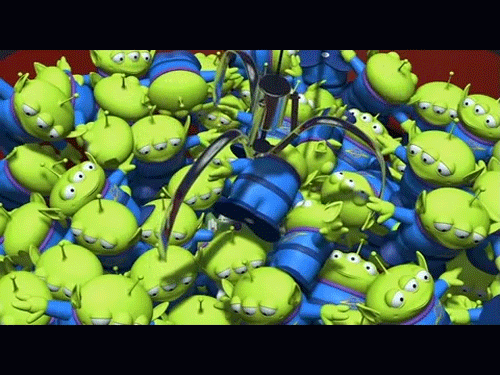
One Step at a Time
THE HISTORY OF CLAW MACHINES






Back towards the end of the 1800s we started to see the very beginings of the first arcade. The first skill crane games. They were cranked by hand, the old fashion way. The machines also featured a candy dispenser and only cost one penny to play! Badda bing, that arcade was born!
In the early 1920s, there was a type of machine that was patented as one of the earliest arcade games, called "Eerie Digger. This is when the modern arcade was still a tiny tiny baby.
There were earlier machines, like the Holly Crane and the Lucky Crane, that featured wooden cabinets. These machines were arranged horizontally, with prizes on the floor so that players were forced to look through the large glass panel on top to be able to see what they were aiming for.
Claw strength on the early vertical skill cranes was not adjustable and the claw was limited by a single forward and a single sideways motion before the claw would drop to retrieve the prize.
The year was 1951 when, Federal laws outlawed these types of cranes and basically considered them gambling devices. This made transporting them across state lines illegal, literally, overnight. pretty much put an an end to the crane business as the world knew it... but only for a couple of years.
It was only 2 years later when these laws were modified to allow diggers to be operated at carnivals. However, they had to meet specific guidelines. The machines had to be strictly mechanical and could not contain prizes higher than $1 in value. No coin slots were not allowed, so the machine had to be turned on by the operator. Cost per play could be no greater than 10 cents. Abracadabra, enter, gambling laws.
The dawn of the computer.
This new advanced technology allowed for more sophisticated claw machines to be born into the market. During the late 70's and early 80's, skill cranes and claw machines of all types were sent from over seas countries like Europa and Asia.
Success of crane machines continued and the laws became less harsh in the 70's. The coin slots came back. The cost of play on some cranes was raised to a whopping 25 cents.
During the 80's, the newer vertical claw machines appeared and this gave birth to the style of skill cranes that we see in locations today. These modern machines gave birth to adjustable claw strength, dollar bill acceptors, and even joysticks. This allowed for complete control and the ability to reach every corner of the machine instead of using only 2 buttons, limited only by an on board timer.
In 1995, "The Claw" appeared in Disney's "Toy Story"! About a year later, one of the top suppliers of claw machines, American Coin Merchandising, Inc., signed a contract with a large number of retail corporations, like Walmart, and began to install and operate "Sugarloaf" claw machines in restaurants and stores all over the good old US of A.
Some Walmarts had as many as 10-12 machines per store, set up by the store entrances / exits, as well as in game rooms. Since then, skill cranes have been popping up in many restaurants, grocery stores, and many other commercial locations. New claw machines came standard with advanced features, such as payout ratios, multi-stage claw tension adjustments, and fail limits (to stop operating when too many prizes have been dispensed within a short amount of time).
Older versions, retired from play, started making their way to onto Ebay and into game rooms and man caves nationwide.
A n insanley popular Japanese claw machine called the Sega UFO Catcher entered the US market in more recent years. The UFO catcher is more difficult because it has only 2 prong claws, it moves at a slower speed but with a proper grab, items typically don't escape prior to the carriage arriving back to the prize chute.
The claw machine or skill crane gave birth to a new type of arcade game. Enter redemption games.
Games like Stacker and Keymaster.
These are the types of game that we see in bowling alleys, arcades and movie theaters all over the country.
Games such as Flaming Finger, Stacker and Keymaster allow players to try their luck and apply a little bit of skill in order to win minor or major prizes.
The changes to win are based off of the payout ratio and the players skill at winning the game.